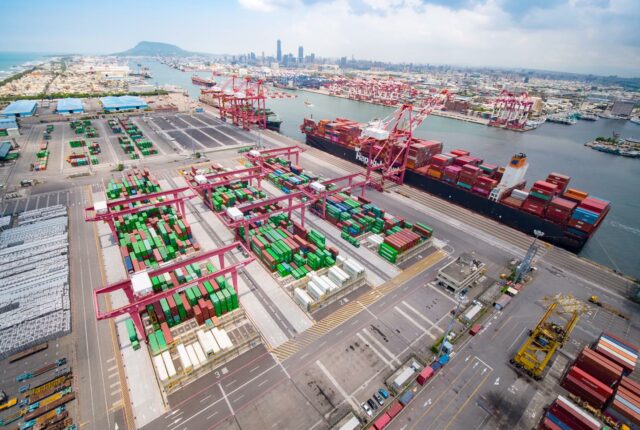
Small Businesses Running Out of Options in Trump’s Trade War
President Trump says his tariff offensive could cause the economy “a little disturbance.” For small businesses like Quake City Casuals, the disruption has already landed like a thunderbolt.
The Los Angeles headwear seller absorbed roughly half the cost of the president’s 10% tariff on Chinese imports in February and stockpiled an extra $500,000 of inventory before they went into effect.
None of that maneuvering has kept Quake City’s sales from plummeting 40% this year. Its end users are companies that buy its customized caps and beanies from distributors for promotional purposes and many are holding back on orders because of their own tariff fears, Quake City President John Glucksman said. If business doesn’t get better by the end of March, he says he will have to cut some of Quake City’s 45 staff.
“There is only a limited amount of things we can do to reduce our costs,” said Glucksman, who has trimmed the hours of workers who silk-screen and embroider the hats in the U.S. by 10% and is sending smaller teams to trade shows.
Small businesses don’t have the same range of options or ability to navigate a trade war that America’s biggest companies do. They typically lack large cash cushions or the leverage to negotiate bigger discounts with suppliers, and don’t often have a wide range of products to spread price increases around. Many of them are cutting costs and putting expansion moves on hold. Job cuts could soon follow, some owners said.
Quake City’s Glucksman has asked his Chinese manufacturing partner for discounts to help offset the higher tariff costs. He said he got a break for half of the 10% February tariff after it went into effect but is still waiting to hear about a further discount since an additional 10% tariff on Chinese imports was imposed in March.
Confidence among small businesses dropped again in March, after plunging in February, according to a survey of small-business owners conducted by Vistage Worldwide. More than 40% said economic conditions had worsened compared with a year ago, up from 22% in February, and the share of those who expect conditions to improve over the next 12 months has fallen by half to 27% since January.
Tariffs are a major source of worry: Nearly two-thirds said that tariffs and other trade issues would hurt their business, while 8% said they would benefit from them, according to Vistage, a business-coaching and peer-advisory firm.
Some small businesses are struggling just to get a handle on the impact of the tariffs. At Candor Threads, a supplier of branded apparel with seven employees in Chicago, a two-person logistics team is busy reviewing invoices for every delivery passing through customs to assess how much the new tariffs on Chinese imports are adding to the company’s costs.
“We don’t have the luxury of having a team on top of this all day,” said Candor Threads’ chief executive, Becky Feinberg-Galvez. Tariffs on some products are higher than others, depending on factors such as the fabric used, the team has discovered, and the company won’t tweak its pricing until it can fully determine the increase.
The gloomy outlook among small businesses is weighing on hiring plans. In February, uncertainty among small businesses reached its second-highest level in 51 years that the National Federation of Independent Business has been polling small-company owners, the group said. The highest reading was in October, just before the election.
A net 15% of small-business owners said they plan to create new jobs over the next three months, according to the NFIB survey, down 3 points from January. Companies with fewer than 500 workers account for nearly 46% of the private-sector workforce, according to the Small Business Administration.
Pulsar Products, a Cleveland supplier of stationery, novelty items and souvenirs with 36 employees, had planned to hire six more people this year, including four artists to create new designs for notebooks and other products. But tariffs on Chinese imports have put those plans on hold as the company cuts investment in broadening its product lines, said Pulsar CEO Eric Ludwig.
The company is less reliant on China than it was two years ago, when the country accounted for 80% of its supply. Now, after it moved some sourcing to Vietnam, China makes up 50%. Moving production to the U.S. isn’t an option, Ludwig said, because of high labor costs and the lack of manufacturing partners.
It has already begun passing on higher tariff costs to customers. Sticker books and diaries that now retail for $4.95 or $5.95 could soon sell for $1 or $2 more, said Ludwig, who has stepped up talks with potential partners in Australia and the U.K., markets that aren’t subject to tariffs, Ludwig said. It has also become more vigilant about collecting receivables as tariffs squeeze cash flow.
Some small companies with U.S. manufacturing bases say, long term, tariffs could fuel more business growth. Thomas Instrumentation, an electronics design and manufacturing company in Cape May Court House, N.J., faces additional costs on the semiconductors it imports from China. But it is getting triple the number of requests for price quotes than last year from prospective customers now looking for U.S. supply.
They are “not wanting to be involved in the drama,” said Cassandra Cummings, CEO of the 14-person company, whose customers included other manufacturers and biopharmaceutical companies. Some are just testing the waters, but the queries have led to a handful of new orders, she said.
Yet for other manufacturers, the Trump administration’s stop-and-start tariffs simply mean paralysis.
Timberline Pallet, a custom pallet and crating company in East Moline, Ill., normally puts in an order for lumber at least once a week. It hit pause for one week earlier this month when lumber prices surged in anticipation of tariffs on Canadian imports.
“We are afraid if we buy in now we might be buying into a spike,” Michael Kelker, president of the 25-person company said after prices jumped. Timberline normally receives four to five tractor-trailer loads of lumber a week, much of it from Canada.
Unlike larger companies, it can’t lock in volume pricing or stockpile inventory, Kelker said. This week, he sent a note to customers telling them the company was raising prices.
Peter Broer, CEO of Lumitex, a maker of medical lighting products, said preparing for new tariffs and keeping up with rapid-fire policy changes has left the Brecksville, Ohio, company with less time to focus on improving its operations, developing new technologies and finding new business opportunities.
Trump’s decision to pause tariffs on many Mexican imports for another month gives Lumitex more time to prepare.
Still, “it will continue to distract us through March preparing for this,” said Broer, who has 150 employees. “That is why businesses need certainty.”
Source: Article






